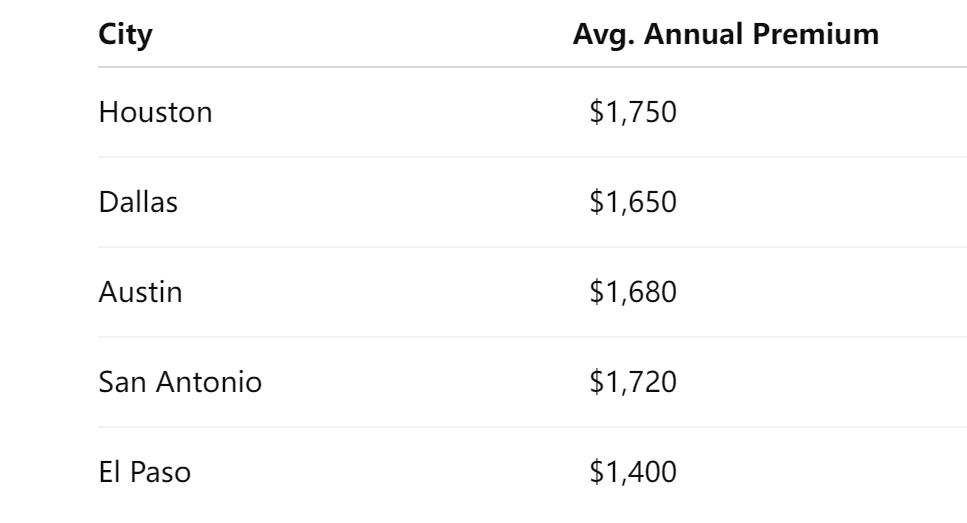Texas Car Insurance Guide 2025: Essential Tips for Lone Star State Drivers
Published on July 15, 2025
🤠 Texas Car Insurance Guide 2025: Essential Tips for Lone Star State Drivers
Introduction
Whether you’re cruising Interstate 35 through Austin or navigating the busy streets of Houston, having the right car insurance in Texas is vital. With severe hailstorms in North Texas, flood-prone Gulf Coast regions, and a high percentage of uninsured motorists, understanding Texas’s unique auto insurance landscape will help you find coverage that’s both affordable and comprehensive.
In this update for 2025, we’ll walk you through everything: from Texas minimum car insurance requirements and average premium comparisons by city, to proven ways to secure cheap car insurance in Texas without sacrificing critical protection.
1. Meet Texas’s Minimum Liability Insurance Requirements
To legally operate a vehicle in Texas, your policy must include at least 30/60/25 liability limits:
- $30,000 bodily injury per person
- $60,000 bodily injury per accident
- $25,000 property damage per accident
These limits represent the state’s minimum car insurance requirements in Texas, but they often fall short of covering real-world accident costs. Consider increasing your liability limits and adding full coverage (collision and comprehensive) to avoid unexpected expenses.
2. Compare Average Premiums in Major Texas Cities
Annual rates for full coverage car insurance in Texas average around $1,700, though regional factors can push premiums higher:

In metro areas prone to hail or high accident frequency, drivers often pay up to 15% more than the statewide average.
3. Factors Driving Your Texas Car Insurance Rates
Your Texas auto insurance premium is influenced by:
- Weather-related risks: hail damage claims spike rates in the Panhandle and Dallas-Fort Worth
- Uninsured driver percentage: Texas has a higher-than-average rate, making uninsured motorist coverage crucial
- Driving record and age: younger or accident-prone drivers pay premiums up to 50% higher
- Vehicle type: sports cars and luxury SUVs cost more to insure than sedans or minivans
Since Texas allows credit-based pricing, improving your credit score can lead to substantial discounts.
4. How to Secure Cheap Car Insurance in Texas
Ready to lower your premium? Follow these steps to find cheap car insurance in Texas:
- Shop Around: Compare rates from both national carriers (GEICO, State Farm) and Texas-based insurers (Texas Farm Bureau, Kemper).
- Bundle Your Policies: Combine auto and homeowners (or renters) insurance to earn multi-policy discounts up to 20%.
- Raise Your Deductibles: Opt for a $1,000 collision or comprehensive deductible to drop your premium by 10–15%, provided you have emergency funds.
- Enroll in Telematics Programs: Usage-based insurance like Allstate Drivewise and State Farm’s Drive Safe & Save reward safe driving with up to 30% off.
- Ask About Low-Mileage Discounts: If you drive under 7,500 miles per year, some insurers will reduce your rate.
Regularly revisiting and comparing Texas car insurance quotes ensures you’re capitalizing on the best deals.
5. Must-Have Optional Coverages for Texas Drivers
In Texas, certain add-ons deliver crucial extra protection:
- Comprehensive Coverage: Pays for non-collision losses like theft, vandalism, and hail—essential in West Texas.
- Uninsured/Underinsured Motorist Bodily Injury (UMBI): Covers you when the at-fault driver lacks adequate insurance.
- Roadside Assistance and Rental Reimbursement: In a state where your next gas station can be miles away, these can be lifesavers.
- SR-22 Insurance: Required after DUI or major violations to reinstate your driving privileges.
Tailor these options based on your driving patterns and regional risks.
6. Tips to Further Lower Your Premium
Beyond discounts, these proven strategies help Texas drivers save even more:
- Maintain a clean driving record: Avoid tickets and at-fault accidents to qualify for safe driver discounts.
- Drive a car with advanced safety features: Anti-lock brakes, backup cameras, and lane departure warnings can earn discounts.
- Pay annually instead of monthly: Many insurers offer a 5% savings for lump-sum payments.
- Improve your credit score: Since Texas insurers use a credit-based insurance score, good credit can mean lower rates.
Implementing just a few of these tactics can translate to hundreds of dollars in annual savings.
Conclusion
Finding the right car insurance policy in Texas means balancing state requirements with your personal risk profile and budget. By understanding Texas’s minimum liability limits, comparing premiums across cities, and leveraging targeted discounts, you can secure affordable coverage for all your Lone Star State roads.
Keep shopping, stay informed on weather and traffic risks, and review your policy annually to ensure you’re always getting the best value.